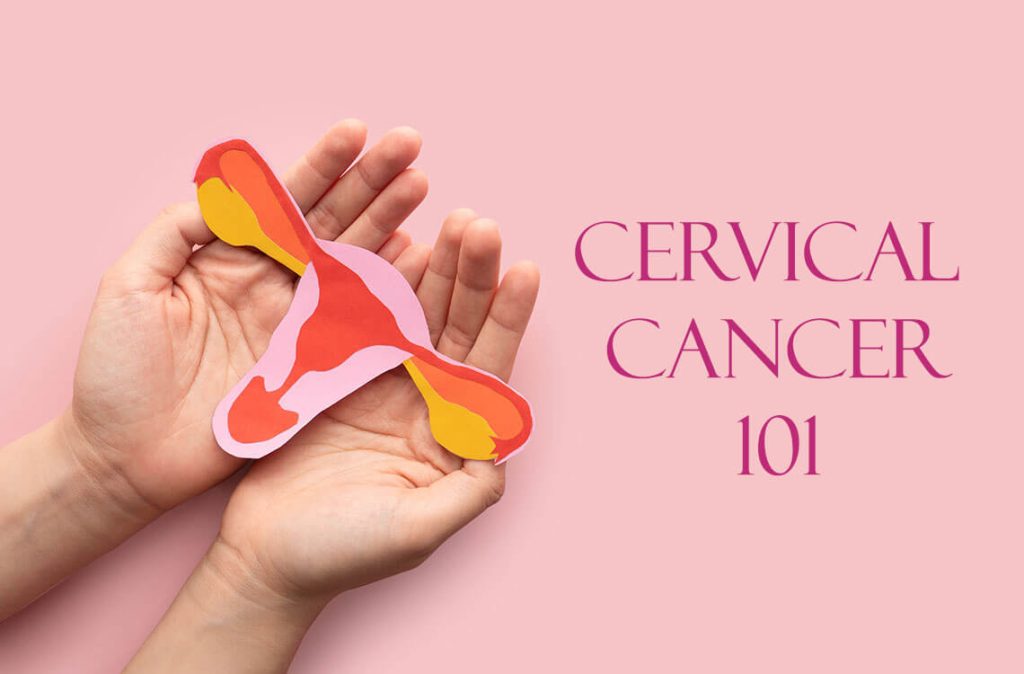For those unfamiliar with the disease, cervical cancer is one of the five most common gynaecological cancers that affect women. There needs to be more public awareness of this disease so that more Malaysians can learn how to manage their sexual health.
In conjunction with Gynaecological Cancer Awareness Month, we interviewed Dr Anuradha Suberamaniam, Consultant Obstetrician & Gynaecologist at Beacon Hospital to learn more about cervical cancer.
Q1: What are the current statistics of cervical cancer in Malaysia?
Cervical cancer is the 3rd most common female cancer in Malaysia and 4th most deadly cancer among women worldwide.
Almost 1700 females are diagnosed with cervical cancer every year and almost 950 die every year from it. That’s quite a high number, which is why it’s so important for women to get themselves checked. It could potentially save lives.
Q2: What is the number one misconception about cervical cancer?
That it is only common among high-risk behaviour patients. For instance, women who have multiple sexual partners. This is not true.
Any sexually active woman is at risk for developing cervical cancer. It doesn’t matter if you have one partner or multiple partners. The risk is always there.
Q3: Who is most at risk for cervical cancer and what are the risk factors?
Sexually active women who don’t go for routine cervical screening or PAP smear is most at risk of developing cervical cancer—I cannot stress this enough.
Cervical cancer is preventable by screening. The doctors will be able to identify the warning signs and treat it before it becomes aggressive.
There are a few risk factors associated with cervical cancer that you should watch out for. These include persistent Human Papilloma Virus (HPV), infection, smoking, sexually transmitted diseases, multiple sexual partners, and being immunocompromised.
Q4: How long can cervical cancer go undetected?
Cervical cancer is a slow growing cancer. At the early stages (microscopic), you might not even experience any symptoms. This is why it’s often called ‘a silent killer of women’.
It can go undetected for years before presenting symptoms. By then it may be too late.
Q5: How do doctors usually treat cervical cancer and what are the side effects?
Treatment of cervical cancer depends on the stage of the cancer. Early stage would be surgery with very few risks and complications. Advance stage would be radiotherapy with chemotherapy or chemotherapy alone.
Of course, as most of us know, cancer treatments don’t come without consequences.
For instance, Pelvic Radiotherapy can often cause side effects as like bowel and bladder inflammation. Chemotherapy causes hair loss, tiredness, loss of appetite, low blood counts.
Q6: What are some warning signs of cervical cancer that patients may often overlook?
When a patient first develops symptoms of cervical cancer, its usually already at an advanced stage.
Symptoms such as bleeding after sex (postcoital bleeding), abnormal vaginal bleeding and vaginal discharge which may be foul smelly shouldn’t be overlooked.
Q7: What screenings should women get for cervical cancer precaution?
The best screening you should go for to prevent and monitor for cervical cancer is a basic cervical screening; or as it is more commonly known, a PAP smear—with or without HPV screening.
This screening should suffice if you want to check for abnormal cell behaviour and other problems
Q8: How often should women get a PAP smear and from what age?
So, a PAP smear or Papanicolaou Test is a non-invasive procedure that detects cancerous or precancerous cells in the cervix. The test involves collecting a sample from the opening of the cervix using a small brush or spatula.
All sexually active women between the ages of 20 to 65 years old should take a PAP test every 3 years.
PAP tests can be uncomfortable for many women, but it should never be painful. It’s important for doctors to be patient and for patients to relax as much as they can.
Q9: People often blame birth control for causing female cancers. Is this true?
This is not true. Taking birth control pills only slightly increases your risk for breast and cervical cancer.
But studies show that the reverse is true for ovarian and endometrial (lining of the womb) cancer. Birth control medication can actually lower your risk for developing these two cancers.
However, that aside, there are other bigger cancer risk factors you should worry about. For instance, your age, weight, reproductive history, family cancer history, HPV infection and many others.
The best birth control method is the one that works best for your lifestyle and your health concerns.
Q10: In conjunction with Gynaecological Cancer Awareness Month, do you have any advice you would you like to share with all the women in Malaysia?
Be aware of your body changes. If you notice any abnormalities, please get checked by a doctor. If you’re not happy, get a second opinion. Prevention is better than cure.
Primary prevention of cervical cancer is HPV vaccination, which can be taken till the age 45 years old. Secondary prevention is cervical screening (PAP Smear).
That said, please get screened even when you don’t notice any changes.
Source: Dr Anuradha Suberamaniam, Consultant Obstetrician and Gynaecologist, Beacon Hospital
Disclaimer: The information provided in this article is for informational purposes only and should not be considered as medical advice from Motherhood. For any health-related concerns, it is advisable to consult with a qualified healthcare professional or medical practitioner.
For more insightful stories and fun recipes, stay tuned to Motherhood Story!
